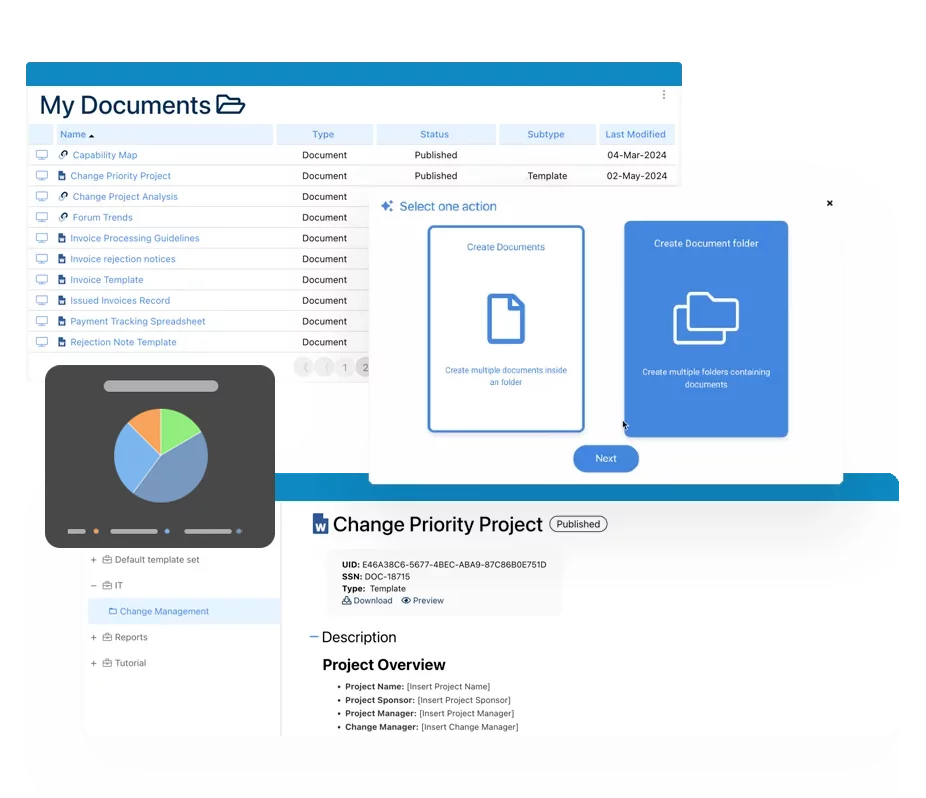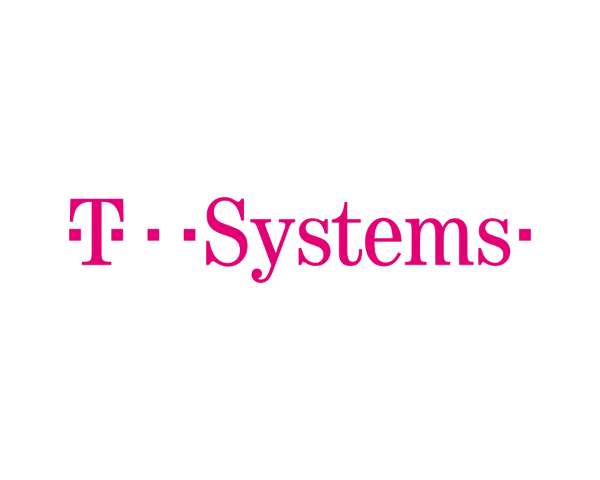- Business Process Management (BPM)Document Management System (DMS)Electronic Quality Management System (QMS)Risk, Governance & Compliance (GRC)Low Code Rapid Application Development (LC)Business Continuity Management (BCM)Enterprise Architecture (EA)Business Process Management (BPM)Document Management System (DMS)
- Document Control Overview
- AI Content Creation & Improvement
- Policy & Procedure Management (SOP)
- AI Content Mining Parser
- Collaboration & Governance
- Data Migration & Integration
- Interfacing Offline App
 Electronic Quality Management System (QMS)
Electronic Quality Management System (QMS)- Quality Management System Overview
- Document Control & Records Management
- Audit & Accreditation Management
- Corrective & Preventative Action
- Quality Event (Non-conformity / Complaint/ Compliance)
- Risk Management
- Incident Management
- Environmental Health & Safety
- Product & Supplier Management (SCAR)
- Training Management
- Control Management
- Action Items Management
- Management Review
- FMEA
- Pharmacovigilance
- Data Migration & Integration
 Risk, Governance & Compliance (GRC)
Risk, Governance & Compliance (GRC)- Risk, Governance & Compliance Overview
- Risk & Control Management
- Regulatory Compliance
- Collaboration & Governance
- Data Migration & Integration
- Interfacing Offline App
 Low Code Rapid Application Development (LC)
Low Code Rapid Application Development (LC)- Low Code Automation Platform Overview
- Electronic Web Form Design (eFORMS)
- Database Table Entity Designer
- System Integration Designer
- Design & Manage Tasks
- Design & Manage BPMS Apps
- Custom Rules/Guards/Actions
- Electronic Services
- User Homepage
- BAM (Business Activity Monitoring)
- Custom Dashboard Design
- Data Migration & Integration
 Business Continuity Management (BCM)
Business Continuity Management (BCM)- Business Continuity Management Overview
- Business Impact Analysis
- Disaster Recovery Simulation
- Action Item Management
- Mass Notification Management
- Asset Management
- Interfacing Offline App
 Enterprise Architecture (EA)
Enterprise Architecture (EA) - IndustriesRegulatory ComplianceUse CasesLearning CenterFramework & PracticesIndustries
- Healthcare
- Medical Device Technology
- Life Science, Pharmaceutical
- Aerospace & Defense
- Airlines and Aviation
- Media & Telecommunications
- Government and Military
- Technology
- Energy
- Logistics & Port Operations
- Banking & Capital Markets
- Retail & Consumer
- Consulting
- Education
- Engineering & Construction
- Manufacturing
- Financial Services
- Insurance
- Chemicals
Regulatory Compliance- Regulatory Compliance
- ISO
- ISO 9001 (guide)
- ISO 9001:2026 (preparation)
- ISO 17025
- ISO 27000
- ISO 27001
- ISO27002
- ISO 42001
- EU AI Act
- SOC 2 Type 1 & 2
- Sarbanes Oxley
- GxP
- GRC
- Basel
- Digital Signature
- GDPR
- IFRS
- NIST SP 800-53
 Use Cases
Use Cases- Quality Management System (QMS)
- Digital Transformation
- Continuous Improvement
- Governance, Risk & Compliance
- Knowledge Management
- System Deployment (ERP, CRM…)
 Learning CenterFramework & Practices
Learning CenterFramework & Practices - AboutCustomer SuccessPartners



Process Modeling vs.
Process Mapping
Please Select contact form.
In the world of Business Process Management (BPM), the terms process modeling, and process mapping are almost always used interchangeably.

Process Modeling vs. Process Mapping
In the world of Business Process Management (BPM), the terms process modeling, and process mapping are almost always used interchangeably. Understanding the differences in each term would be helpful for those who may be new to the field or who may want a deeper exposure to BPM overall.

A holistic, top-down management approach

Focuses on optimizing business operations to maximize customer satisfaction

Strong emphasis on continuous process improvement

EPC, a cloud-based business process management software

Organization around clearly defined and documented processes and managing process lifecycles
What is
Process Mapping
When we look at how a business process operates, we see all the steps and tasks involved with it. Process mapping is quite simply creating a map to visually show (a.k.a. – workflow diagram) the steps to a particular business process. By visually capturing the steps, we can get an accurate view of the process from end-to-end. The source of input for these maps comes from various data capture methods through investigation (documentation, simple drawings, SOP’s etc.).
Business activities supported by process mapping include monitoring, analysis and reporting, as well as all activities related to compliance (regulatory or otherwise).

what is
Process Modeling
Process modeling takes things to a deeper level as a model is a visual representation of a business process (flow of work) in detail to its perspective relative to business operations. This includes showing all elements of process documentation.
Process Modelling will introduce Org structure, information (documents and data), business rules, risks, and controls.
With process modeling, continuous improvement becomes easier to manage as a stakeholder can optimize process bottlenecks based solely on an accurate properly completed process model. To take it one step further, it is because the extra information (data, etc.) you have at your fingertips, provides the ability to do more analysis and even simulation.
Process modeling follows the industry standard Business Process Modeling Notation (BPMN) symbol layout. This is a set of shapes individually identified to represent various tasks involved along a process life-cycle. With standardization, comes a common use of symbols that anyone reviewing can easily identify when examining process improvement opportunities for certain tasks.

Understanding DIFFERENTIATION
While process mapping gears more toward understanding the current state of things, process modeling’s focus is more on process optimization. Interfacing’s Enterprise Process Center (EPC) is an excellent example of the ability to do more than just document process flow. It empowers complex organizations to align processes, execute digital transformation strategies, ensure regulatory compliance and continuously improve using digital knowledge, collaboration, and automation solutions.
Process mapping
Process mapping
Process mapping focuses on documenting the detailed steps of a process. It’s typically used to visualize specific procedures, train employees, ensure compliance, and identify operational inefficiencies. Tools like flowcharts and swimlane diagrams help create these detailed maps, which are essential for execution and continuous improvement.
Process modeling
Process modeling
Process modeling takes a higher-level approach, aiming to analyze and optimize processes. It’s used to understand how processes align with business goals, identify strategic improvements, and communicate concepts to stakeholders. Tools like BPMN and UML help create conceptual models, supporting decision-making and strategy planning.
Why Choose Interfacing?
With over two decades of AI, Quality, Process, and Compliance software expertise, Interfacing continues to be a leader in the industry. To-date, it has served over 500+ world-class enterprises and management consulting firms from all industries and sectors. We continue to provide digital, cloud & AI solutions that enable organizations to enhance, control and streamline their processes while easing the burden of regulatory compliance and quality management programs.
To explore further or discuss how Interfacing can assist your organization, please complete the form below.

Documentation: Driving Transformation, Governance and Control
• Gain real-time, comprehensive insights into your operations.
• Improve governance, efficiency, and compliance.
• Ensure seamless alignment with regulatory standards.

eQMS: Automating Quality & Compliance Workflows & Reporting
• Simplify quality management with automated workflows and monitoring.
• Streamline CAPA, supplier audits, training and related workflows.
• Turn documentation into actionable insights for Quality 4.0

Low-Code Rapid Application Development: Accelerating Digital Transformation
• Build custom, scalable applications swiftly
• Reducing development time and cost
• Adapt faster and stay agile in the face of
evolving customer and business needs.
AI to Transform your Business!
The AI-powered tools are designed to streamline operations, enhance compliance, and drive sustainable growth. Check out how AI can:
• Respond to employee inquiries
• Transform videos into processes
• Assess regulatory impact & process improvements
• Generate forms, processes, risks, regulations, KPIs & more
• Parse regulatory standards into requirements

Request Free Demo
Document, analyze, improve, digitize and monitor your business processes, risks, regulatory requirements and performance indicators within Interfacing’s Digital Twin integrated management system the Enterprise Process Center®!
Trusted by Customers Worldwide!
More than 400+ world-class enterprises and management consulting firms


























































